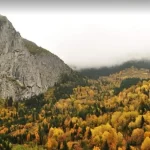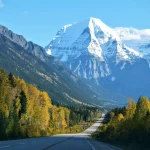The Five Mountains You Must Climb to Earn the Title of Snow Leopard
The Five Mountains You Must Climb to Earn the Title of Snow Leopard. To become a Snow Leopard, 5 mountains must be climbed. Snow Leopard is one of the most challenging mountaineering awards in the world. This award is earned by climbing five high mountains, all of which are over 7,000 meters in height and extremely difficult to climb.
The Snow Leopard (нежный барс / Snezhnyy bars) title is a title given to climbers who have climbed five summits in Central Asia that began during the Soviet era. The documents for this title are issued by the Russian Mountaineering Federation.
The Snow Leopard title has been earned by only a very small number of climbers. Here are the five mountains that must be climbed to become a Snow Leopard:
List of the Snow Leopard Mountains and Their Elevations
- Mount Lenin Peak (Ibn Sina) (7,134 m)
- Mount Korjenevskaya (7,105 m)
- Mount Ismoil Somoni (Peak Communism) (7,495 m)
- Mount Khan Tengri (7,010 m)
- Mount Pobeda (Jengish Chokusu) (7,439 m)
Mount Lenin Peak (Ibn Sina) (7,134 m)
Mount Lenin, also known as Ibn Sina Peak, is a majestic mountain peak located on the border of Kyrgyzstan and Tajikistan in Central Asia. Standing at an elevation of 7,134 meters (23,406 feet), it is the second-highest mountain in the Trans-Alay Range and the seventh-highest mountain in the former Soviet Union.
The peak was originally named Mount Kaufmann, after Konstantin Kaufman, the first governor-general of Turkestan. It was later renamed Mount Lenin in honor of the Russian revolutionary leader, Vladimir Lenin. The mountain has three distinct summits, the highest of which is the northern summit, which is 7,134 meters high.
Mount Lenin is a popular destination for climbers due to its high altitude and challenging terrain. The first successful ascent of the peak was made by a Soviet expedition in 1928. Since then, many climbers from all over the world have attempted to climb the mountain. The standard route to the summit is a long and steep snow and ice climb that involves crossing crevasses and ascending a 45-degree slope. Climbers need to be experienced and well-equipped with proper gear and clothing to tackle this challenging peak.
The area around Mount Lenin is also known for its natural beauty and stunning landscapes. The mountain is part of the Pamir Mountains, which are sometimes referred to as the “Roof of the World.” The region is home to a diverse range of flora and fauna, including the elusive snow leopard, which is one of the rarest big cats in the world. The area also has a rich cultural heritage, with many ancient Silk Road trading routes passing through the region.
In summary, Mount Lenin is a challenging and iconic mountain peak that attracts climbers from all over the world. With its high altitude, stunning landscapes, and rich cultural heritage, the mountain is a must-visit destination for anyone interested in adventure travel and mountaineering.
Mount Korjenevskaya (7,105 m)
Mount Korjenevskaya is the second highest peak in the Pamir Mountains of Tajikistan, with an elevation of 7,105 meters (23,310 feet). The peak was named after Russian geographer Nikolai Korzhenevskiy, who was the first to attempt to climb it in 1902, along with two other explorers. The mountain was not successfully climbed until 1953 by a team of Soviet climbers.
Mount Korjenevskaya is known for its challenging and technical climbing routes, with steep and icy slopes, rocky ridges, and treacherous crevasses. It is also known for its unpredictable and severe weather conditions, with sudden storms and high winds that can pose a serious threat to climbers. Despite its difficulty, the mountain is a popular destination for experienced climbers and mountaineers, who are drawn to its rugged and remote beauty.
The Korjenevskaya Peak is located in the Pamir Mountains, which are part of the larger Himalayan mountain range. The region is characterized by its extreme altitude, rugged terrain, and harsh climate, with snow and ice covering the mountains for much of the year. The area is also home to a diverse range of wildlife, including snow leopards, ibex, and Marco Polo sheep.
In recent years, there has been growing concern about the impact of climate change on the Pamir Mountains and the region’s fragile ecosystem. Rising temperatures and melting glaciers have led to increased flooding and landslides, and threaten to disrupt the delicate balance of the mountain environment. As a result, many mountaineers and conservationists are working to raise awareness about the need to protect and preserve the Pamir Mountains for future generations.
Mount Ismoil Somoni (Peak Communism) (7,495 m)
Mount Ismoil Somoni, formerly known as Peak Communism, is the highest peak in Tajikistan and the highest point in the Pamir Mountains. It stands at an elevation of 7,495 meters (24,590 feet) above sea level. The mountain was named in honor of Ismoil Somoni, the founder of the Samanid dynasty and the ruler of the Persian Samanid Empire from 892 to 907.
The first ascent of the mountain was made in 1933 by a Soviet expedition. It was originally named Peak Stalin, but in 1962, after the de-Stalinization process, the name was changed to Peak Communism. After the collapse of the Soviet Union, the name was changed again in 1998 to honor the ancient Persian king, Ismoil Somoni.
Mount Ismoil Somoni is known for its harsh weather conditions and difficult climbing routes. The climbing season is typically from mid-June to mid-September. The most popular route to the summit is the South Face route, which is considered one of the most difficult climbs in the world. The climb requires technical skills and experience in ice climbing and high-altitude mountaineering.
Mount Khan Tengri (7,010 m)
Mount Khan Tengri is a mountain peak located in the Tian Shan mountain range in Central Asia, on the border between Kazakhstan and Kyrgyzstan. With an elevation of 7,010 meters (22,999 feet), it is one of the highest peaks in the region and a popular climbing destination for experienced mountaineers.
Khan Tengri means “Lord of the Spirits” in the Kazakh language, and the mountain is considered sacred by the local people. It was first climbed in 1931 by a joint Soviet-Kazakh expedition, and since then has been climbed by many other expeditions from around the world.
The ascent of Mount Khan Tengri is a challenging and technical climb that requires a high level of mountaineering skills and experience. The mountain is known for its steep, icy slopes, crevasses, and unpredictable weather conditions, which can include severe storms and high winds. Despite these challenges, the stunning views from the summit and the sense of accomplishment make the climb a once-in-a-lifetime experience for many climbers.
In addition to its natural beauty, Mount Khan Tengri is also significant for its cultural and historical importance. The region around the mountain has been inhabited by various ethnic groups for thousands of years, and it has played an important role in the trade and cultural exchange between Central Asia and neighboring regions. Today, it continues to be a symbol of the region’s natural beauty and cultural heritage, attracting visitors and adventurers from around the world.
Mount Pobeda (Jengish Chokusu) (7,439 m)
Mount Pobeda, also known as Jengish Chokusu or Victory Peak, is the highest peak in the Tian Shan mountain range and the second-highest mountain in Kyrgyzstan, after Peak Lenin. It is located on the border of Kyrgyzstan and China and has an elevation of 7,439 meters (24,406 feet).
Mount Pobeda is known for its difficult and technical climbing routes, with steep ice and rock faces, crevasses, and high altitude conditions presenting significant challenges to mountaineers. It has been the site of numerous climbing expeditions, with the first successful ascent taking place in 1956 by a Soviet team.
Despite being a popular climbing destination, Mount Pobeda has also been the site of numerous tragedies, including several fatal accidents, due to its dangerous terrain and unpredictable weather conditions. Nevertheless, it remains a highly sought-after peak for experienced and skilled mountaineers seeking a challenging and rewarding climb.





